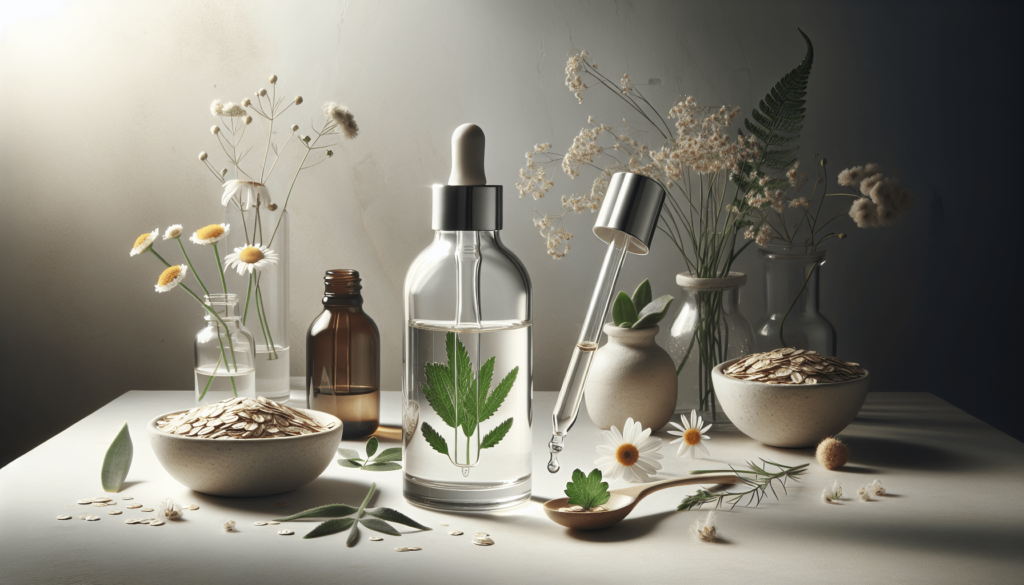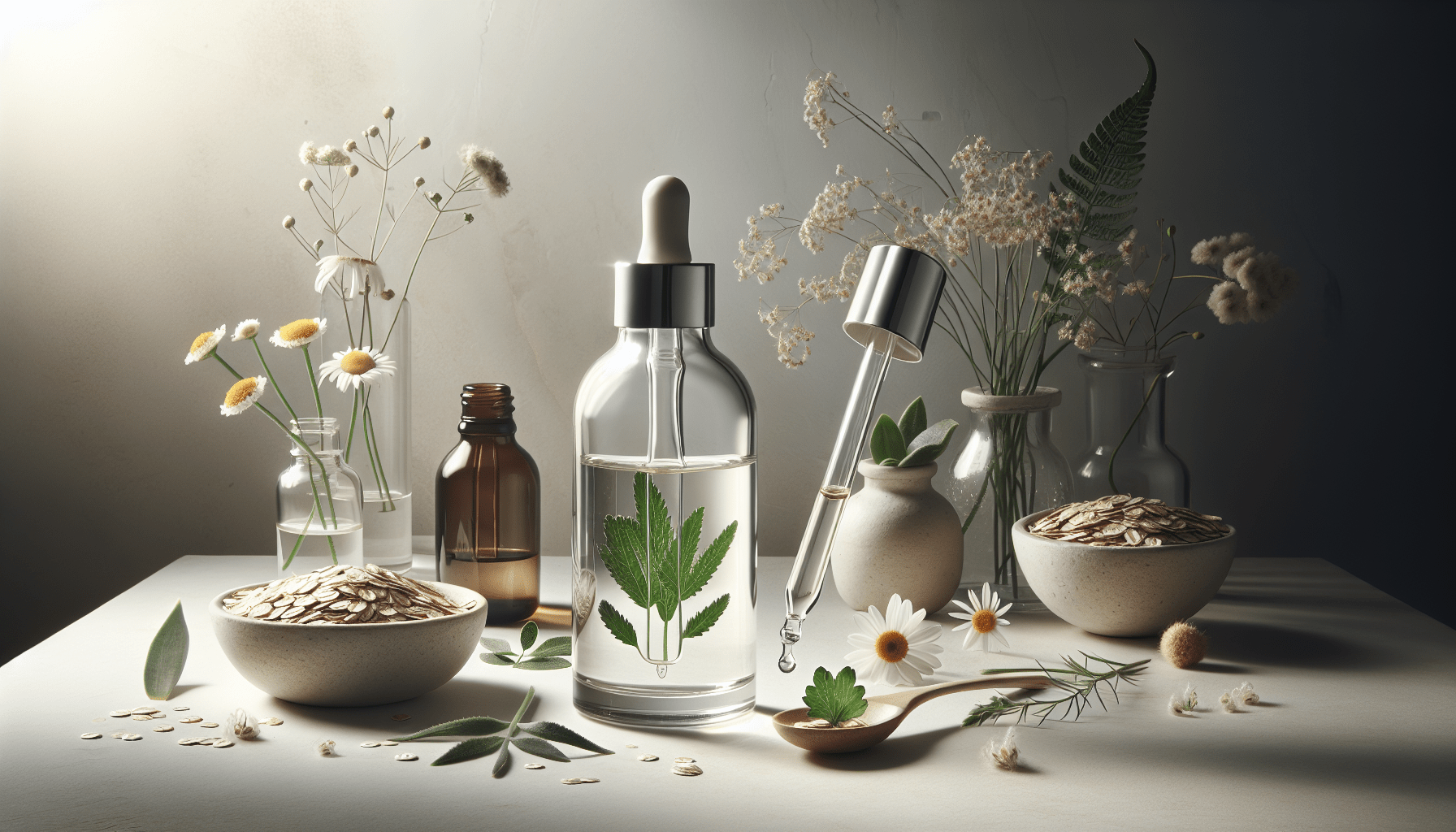Welcome to your ultimate guide to navigating the world of allergy-friendly skincare ingredients! In this article, you’ll discover the essentials for building a skincare routine that prioritizes your skin’s health and comfort. We’ll delve into the common culprits behind allergic reactions, highlight soothing, gentle alternatives, and arm you with the knowledge to choose products that cater to your unique needs. Embrace a journey to radiant, irritation-free skin with confidence and ease. Have you ever felt frustrated by itchy, irritated skin or sudden breakouts that seem to come out of nowhere? If so, you might be among the countless individuals who struggle with allergies triggered by skincare products. Whether you’re new to the world of skincare or trying to navigate allergic reactions, understanding the ingredients in your products can be a game-changer.

Introduction
Finding the right skincare regimen can be a daunting task, especially when you have sensitive or allergy-prone skin. With countless products on the market, each boasting miraculous results, the last thing you need is a breakout, redness, or itching caused by an allergic reaction. This guide aims to help you get started with allergy-friendly skincare ingredients so you can maintain healthy, glowing skin without the risk of irritation.
Understanding Skincare Allergies
What Are Skincare Allergies?
Skincare allergies occur when your immune system reacts to certain ingredients in skincare products. These reactions can range from mild irritation to severe rashes. They are typically characterized by redness, itching, swelling, or even hives.
Common Allergens in Skincare Products
Let’s explore some common allergens that could be hiding in your skincare products.
| Ingredient | Purpose | Potential Allergic Reaction |
|---|---|---|
| Fragrances | Adds scent | Contact dermatitis, irritation |
| Preservatives | Extends shelf life | Redness, itching |
| Parabens | Preservative | Hormonal disruption, irritation |
| Sulfates | Cleansing agent | Dryness, irritation |
| Formaldehyde | Preservative | Sensitivity, cancer risks |
| Alcohols | Antiseptic, solvent | Dryness, irritation |
| Essential Oils | Natural fragrance, benefits | Allergic reactions, photosensitivity |
Types of Allergic Reactions
Allergic reactions to skincare products can be immediate or delayed, and they generally fall into two categories:
- Irritant Contact Dermatitis: This is the most common reaction, causing your skin to become red, swollen, or itchy.
- Allergic Contact Dermatitis: This is less common but occurs when your immune system reacts to specific allergens.
How to Identify an Allergic Reaction
Recognizing an allergic reaction is crucial for your skin health. Check for these signs after using a new product:
- Redness and swelling
- Itching or burning sensation
- Blistering or oozing
If you experience any severe reactions, seek medical attention immediately.
Allergy-Safe Ingredient Guide
Why Choose Allergy-Friendly Ingredients?
Selecting allergy-friendly ingredients minimizes the risk of adverse reactions, making your skincare routine not only safer but more pleasurable. It’s crucial to understand which ingredients are less likely to cause irritation and how they can benefit your skin.
Hypoallergenic Ingredients
Hypoallergenic products are formulated to reduce the risk of causing an allergic reaction. While not universally defined, these ingredients are generally considered hypoallergenic:
- Aloe Vera: Known for its soothing and healing properties.
- Shea Butter: Provides hydration without clogging pores.
- Oats: Calms irritated skin and reduces inflammation.
- Vitamin E: Acts as an antioxidant and helps with skin repair.
- Glycerin: Attracts moisture into the skin, keeping it hydrated.
Natural vs. Synthetic Ingredients
While natural ingredients are often perceived as safer, it’s essential to recognize that they can still cause allergic reactions. Conversely, synthetic ingredients are engineered to minimize risks but may contain harsh chemicals. Here’s a breakdown:
| Type | Pros | Cons |
|---|---|---|
| Natural | Minimal processing, beneficial nutrients | Potential allergens like essential oils |
| Synthetic | Precisely formulated, stable | Possible harsh chemicals, preservatives |
Top Allergy-Friendly Ingredients
Let’s dive deeper into some standout allergy-friendly ingredients you should look out for when curating your skincare routine:
Niacinamide
Niacinamide (Vitamin B3) is great for skin hydration and strengthening the skin barrier. It’s known to calm redness and reduce the appearance of pores, making it suitable for all skin types, including sensitive skin.
Hyaluronic Acid
Despite the term ‘acid,’ hyaluronic acid is exceptionally gentle and well-tolerated. It’s celebrated for its incredible moisture-retaining properties, ensuring your skin stays hydrated without causing irritation.
Ceramides
Ceramides are lipids that naturally occur in the skin, helping maintain the skin’s barrier and retaining moisture. They are especially helpful for dry, sensitive, or eczema-prone skin types.
Squalane
Squalane mimics the skin’s natural oils, providing lightweight hydration. Non-comedogenic and excellent for sensitive skin, it doesn’t cause irritation or breakouts.
Centella Asiatica
Also known as Gotu Kola, this ingredient is famed for its anti-inflammatory and healing properties. It’s excellent for calming irritation and helping skin repair from damage.
Building Your Allergy-Friendly Skincare Routine
Step-by-Step Guide
Creating an allergy-friendly skincare routine involves carefully selecting products and gradually integrating them into your regimen. Here’s your step-by-step guide:
-
Patch Test First: Before integrating a new product, perform a patch test on your inner forearm or behind your ear. Wait 24-48 hours to check for any reactions.
-
Start Simple: Begin with basic products like a gentle cleanser, moisturizer, and sunscreen. Add new products one at a time.
-
Read Labels: Look for labels that say “hypoallergenic,” “fragrance-free,” and “non-comedogenic.”
-
Keep a Skincare Journal: Document the products you use and any reactions you experience. This can help you identify which ingredients may be causing issues.
-
Consult a Dermatologist: For persistent issues or customized advice, consulting a dermatologist is always a smart move.
Recommended Products
Here are some highly recommended allergy-friendly skincare products to consider:
| Product Type | Recommended Product | Notable Ingredients |
|---|---|---|
| Cleanser | Cetaphil Gentle Skin Cleanser | Glycerin, Panthenol |
| Moisturizer | Vanicream Moisturizing Cream | Petrolatum, Dimethicone |
| Sunscreen | EltaMD UV Clear Broad-Spectrum SPF | Zinc Oxide, Niacinamide |
| Serum | The Ordinary Hyaluronic Acid 2% + B5 | Hyaluronic Acid, Vitamin B5 |
| Toner | Thayers Witch Hazel Toner | Aloe Vera, Glycerin |

Ingredients to Avoid
Fragrances
Fragrances are among the most common causes of allergic reactions. Even products labeled “unscented” can contain masking fragrances. Opt for fragrance-free options.
Essential Oils
While they’re natural, essential oils can be highly allergenic. Oils like lavender, tea tree, and citrus are frequent culprits. If you love essential oils, patch-test them before applying to your face.
Alcohols
Certain alcohols can dry out and irritate your skin. Avoid products with denatured alcohol, ethanol, and isopropyl alcohol. However, fatty alcohols (like cetyl, stearyl, and cetearyl alcohol) are generally safe and beneficial.
Sulfates
Sulfates like sodium lauryl sulfate (SLS) can strip your skin of natural oils, causing dryness and irritation. Look for sulfate-free cleansers and shampoos.
Parabens
Parabens are preservatives used to extend the shelf life of products. They have been linked to hormonal disruptions and allergic reactions. Opt for paraben-free products when possible.
Allergy Testing and Consulting a Dermatologist
Patch Testing
Patch testing is a reliable method to identify which ingredients you’re allergic to. A dermatologist applies small samples of various allergens to your skin, typically on your back, and observes for any reactions over a few days.
Consulting a Dermatologist
If you’re unsure about the ingredients or experiencing persistent issues, consulting a dermatologist can offer peace of mind and customized recommendations. Dermatologists can provide patch tests, prescribe treatments, and guide you on the best allergy-friendly products for your skin type.
Allergy-Free Certifications
Look for certifications or seals from reputable organizations that indicate a product is free from common allergens. For example, the National Psoriasis Foundation Seal of Recognition or the Allergy UK Seal of Approval.
DIY Allergy-Friendly Skincare
Benefits of DIY Skincare
Creating your own skincare products allows you to control the ingredients and avoid potential allergens. Plus, it can be a fun and rewarding experience. You’ll know exactly what’s in your products, ensuring they’re safe for your sensitive skin.
Simple DIY Recipes
Here are a couple of easy and safe DIY skincare recipes:
Soothing Aloe Vera Gel
Ingredients:
- Fresh Aloe Vera leaves
- 1 tablespoon Vitamin E oil
Instructions:
- Extract the gel from fresh Aloe Vera leaves.
- Mix in Vitamin E oil.
- Store in a clean, airtight container in the refrigerator.
- Apply to your skin as needed.
Hydrating Oatmeal Mask
Ingredients:
- 2 tablespoons Colloidal Oatmeal
- 1 tablespoon Honey
- 2 tablespoons Plain Yogurt
Instructions:
- Mix all ingredients in a bowl until you achieve a smooth paste.
- Apply the mixture to your face and leave it on for 15-20 minutes.
- Rinse off with warm water and pat dry.
Precautions with DIY Skincare
While DIY products are safe, always perform a patch test before applying them to your face. Store them properly and use them within a short period to avoid bacterial contamination.
Conclusion
Navigating the world of skincare with allergies can be challenging, but with the right knowledge, it becomes manageable and even enjoyable. By understanding which ingredients are safe and how to identify and avoid potential allergens, you can create a skincare routine that ensures your skin remains healthy and radiant.
Remember, what works for someone else might not work for you. Take the time to understand your skin and its unique needs, and don’t hesitate to seek professional guidance if needed. Your journey to allergy-free skincare begins with informed choices, so you’re already on the right path!
